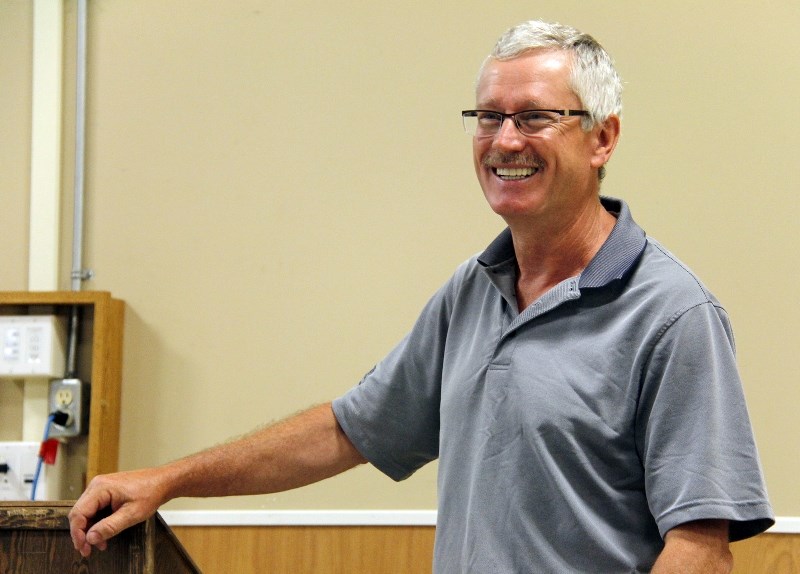Things at Muriel Lake are looking up.
That was the consensus shared at the Muriel Lake Basin Management Society (MLBMS) annual general meeting on Sunday, July 9.
Peter Cordingley, MLBMS president, explained how a study of the water quality and levels of the lake have revealed it's starting to improve.
“The lake is higher today then it was at this time a year ago... that's the first time in a long time,” Cordingley said.
Although the lake level has hit 555.8 metres above sea level, it's still well below what it should be.
The lake's good fortune can be attributed to the wet spring the area saw this year, Cordingley added.
In 2006, Muriel Lake was reported to have hit an all-time low in terms of water level. This was believed to be caused by climate change which has reduced the available water flowing into the lake.
Cordingley said another reason for the drop was because natural and land use changes have interrupted the flow of water into the lake.
“We believe there is also a potential change in the groundwater contribution. We know that the lake gained water from groundwater. Alberta Environment did a study of that in 2010, and it showed that the lake does continue to gain water from the ground,” explained Cordingley.
Another study was conducted in 2012 where weather data and water balance revealed how much the climate has changed, comparing rainfall in the air over numerous years.
“The average from 1951 to 1980 was 451-millimetres, so that was high rainfall. The average since that time, since the lake has been declining, is about 422-millimetres. We're getting less rain then we used to,” Cordingley explained.
This year, the MLBMS is conducting a water quality test on the lake. Their first survey was on June 26.
It revealed that the water levels had risen, and although the windy weather made it difficult to determine just how much it had improved, they did notice that the clarity and oxygen levels were looking better.
If Muriel Lake continues on this uphill trend, the Alberta Government has shown interest in restocking the lake with fish. Which species is not yet decided, but the MLBMS is showing interest in Rainbow Trout because of their adaptability.
Another quality test is set to be completed this week.
The MLBMS is also working on their Beaver Deceiver Project. With the help of a $39,000 federal grant over a three-year period, they will be using a unique technique to keep the water flowing through the creeks and rivers, without harming the beavers or their homes.
“We feel as though beaver activity could be limiting the water level in the lake. Beavers build dams and they hold water back. Beaver dams do seep and water does flow through them, but beavers create a big pond and evaporation from the pond and the volume of the water they hold back is considerable,” explained Cordingley. “We're not proposing to eliminate the beaver, we don't want to shoot them or remove them... This project involves the installation of a beaver dam water level device to maintain a constant level in the pond.”
The system is simple. Using a flexible pipe, the MLBMS will guide the water through the dam, covering both ends with large cages so beavers can't block it with debris. The piping will allow for water to flow freely through the dam and into the lake.
The funding for the project is coming from Environment Canada using the Environmental Damages Fund. It will help cover the cost of materials, and the process of applying to install the system.
Before they can get started, there are guidelines they have to follow.
“For crown land... we need an environmental permit,” Cordingley said.
The application costs $125, but doesn't cover the $900 approval fee or the $6,000 legal survey.
The MLBMS only needs permission from a landowner in the case where a beaver dam is within the MD of Bonnyville, a road allowance, or on private land.
So far, they have received approval from the MD to start the process.
It would take volunteers four to six hours to install the system. Materials would cost $800 to $1,000.
The materials have been purchased for two beaver dams, and were ready to be installed this summer. Unfortunately, the wet spring washed out the beaver dams they were hoping to install the systems in.
Cordingley laughed, “We're not installing there because Mother Nature has done our work for us.”



